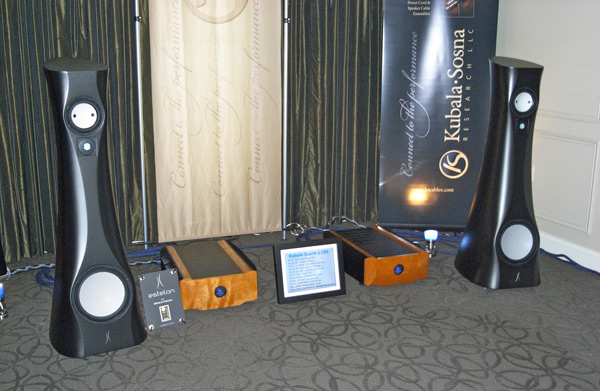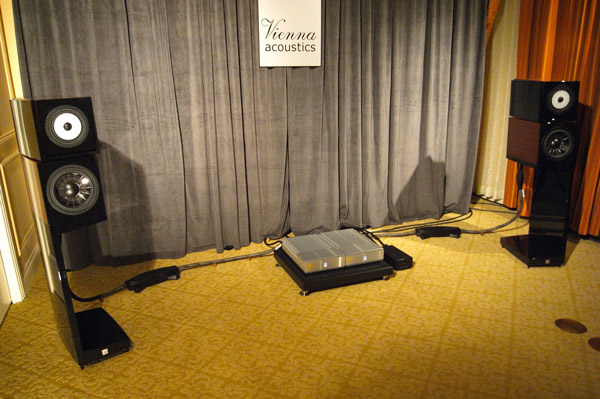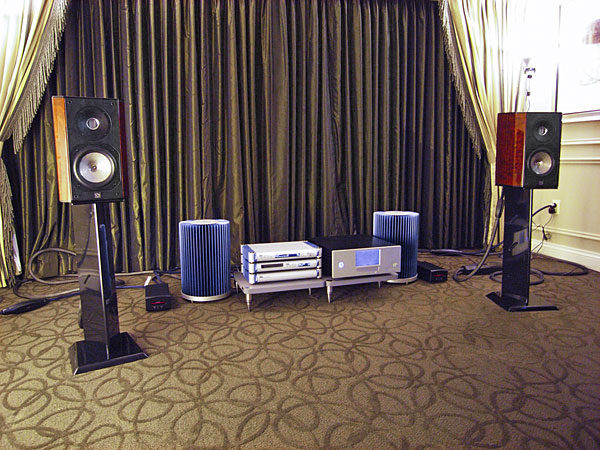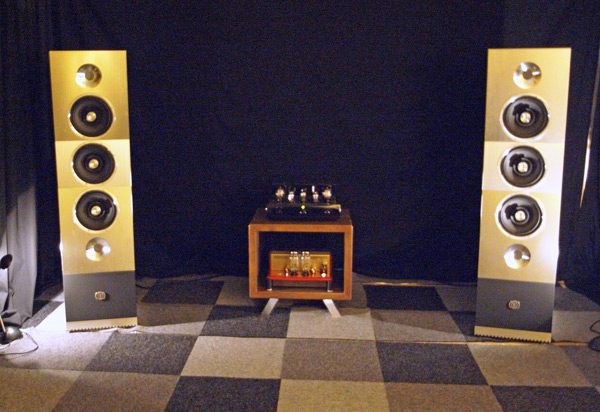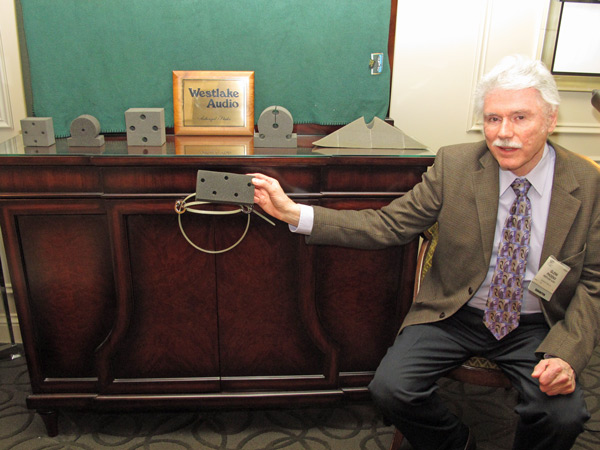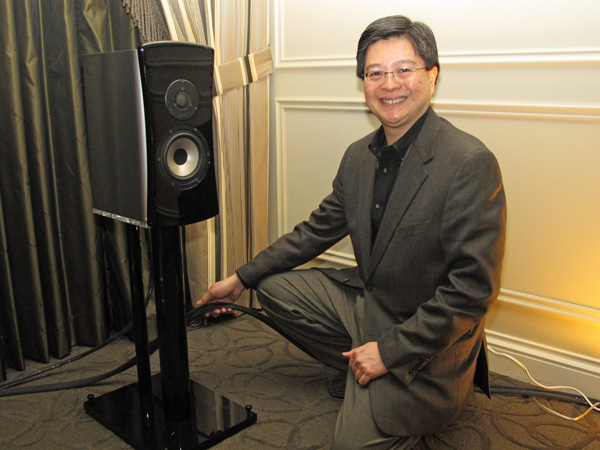LATEST ADDITIONS
TAD Speakers Sing
Estelon Speakers from Estonia
Vienna Acoustics The Kiss
The Kiss looks like a stand-mount but it is really a floorstander with an integral stand. The sound in this room really flattered piano, whether it was a 24/96 file of a jazz trio featuring a Fazioli instrument, or Glenn Gould's 1981 reading of the Bach Goldberg Variations, remastered from the analog backup tapes.
Rosso Fiorentino Siena
The Siennas were demmed in a system comprising Dr. Feikert turntable and tonearm, Abbingdon Music Research CD player, phono preamp, and integrated amplifier, with Acoustic System racks and cables, but I will hand over to Jason Serinus for some additional thoughts:
Volent Paragon VL-2
Zu Goes Its Own Way
The Dominance uses three 10" paper-cone drivers, each with a whizzer cone, to cover the range from 27Hz to 12kHz. Each is in its own sub-enclosure featuring Zu's proprietary ZuRG loading (See AD's review) with the outer two tuned identically and the central drive-unit adjusted to give a bit more upper-midrange energy. There is also a downward-firing 15" subwoofer, covering the octave below 27Hz, and completing the line-up are two horn-loaded ring-radiator tweeters operating above 12kHz. Unusually, these are placed at the top and bottom of the Dominance.
For the dem, the subwoofer was powered by a Pass Labs XA30.5 but the main drive-units were driven by a 1.5Wpc Yamamoto SET amp. Yup, just 1.5W, but the Dominances still managed to fill the room with sound. Lows were tight and extended; imaging was tangible; jump factor was startling; but I couldn't get away from a touch of character in the mid-treble imparted by those whizzer cones.
Now those are speakers!
I hadn't been aware of the Silbatone brand before this CES. Their website says that "The goal of Silbatone Acoustics is to recreate the musical enjoyment of the great theater systems in the home, creating practical realizations for today's serious music listeners." Okay. It turns out that their beautifully constructed power amplifiers ($150,000, depending on tube choice) are vehicles for unusual and rare tubes. The amplifier seen in front of the speakers, for example, used square-base Marconi DA100 broadcast modulation tubes (around $5000 each) for the outputs, with pre-WWII Siemens ED red-base tubes as the drivers. The audiophile air in this room was rarefied, indeed.
Westlake Audio’s Cable Muffs
“We have a rule in the company to keep cables between 2” and 4” apart,” he said. “Putting left and right channels too close together can increase crosstalk, while positioning them too far apart may lead them to generate and pick up interference.” I hope I got that right.
Westlake Audio manufactures cable muffs with a number of different size holes and slots to accommodate a wide assortment of cables other than the extremely thick variety. Prices range between $59.50 and $88/set.
Absolute Fidelity Interfaces
“To me, a cable should not function as a component; it should be an interface between two components,” said Koh. “Since every component is different, and draws power differently, I’ve designed different cables to interface between different components.”
The Absolute Fidelity Interface line currently includes the Loudspeaker Interface ($3000/2m pair); Turntable Power interface, Amplifier Power interface, and Component Power interface (each $1800/1m pair); and Component Interface (for use between source components, $1800/0.6m pair).
Koh explained that, a few years back, when he could not find a cable sufficiently transparent to do full justice to his Genesis 1.2 loudspeaker, he began rolling his own. Steve McCormack and a few other designers he works with were so impressed with the cable that they urged him to market it.
“I didn’t really launch them,” Koh said with a smile. “They just started selling. You can call this the official launch.”



